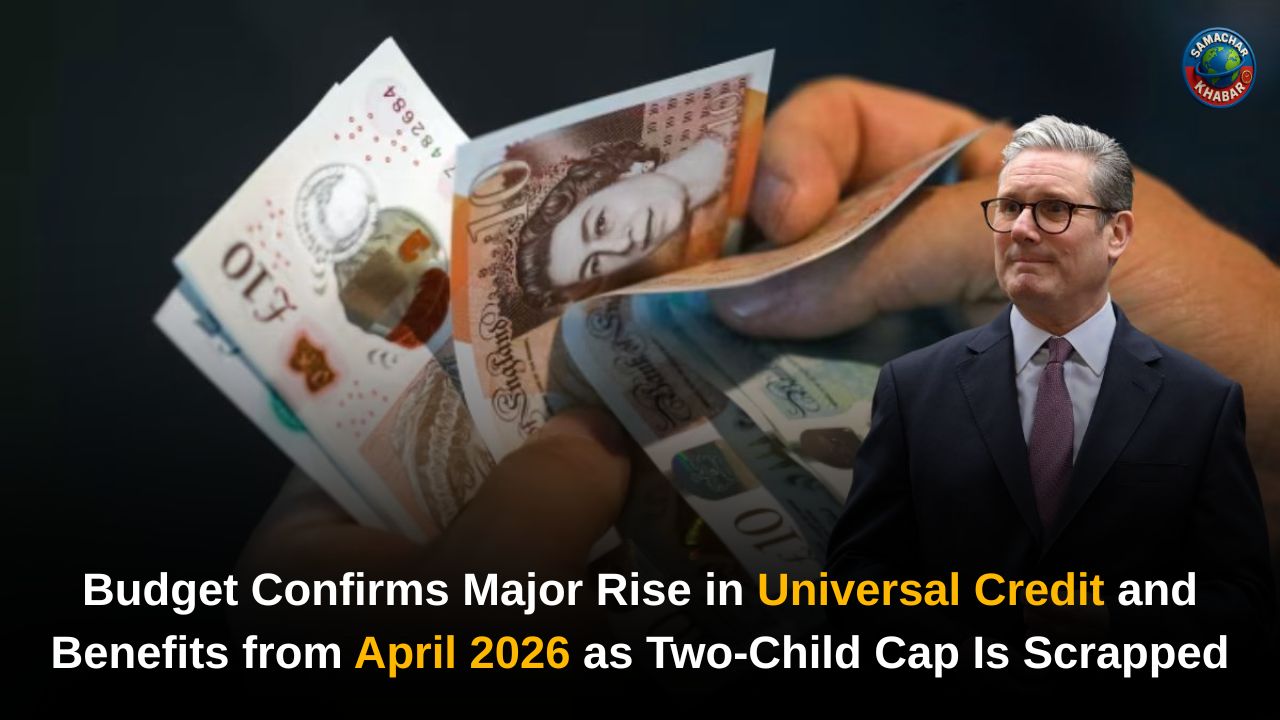India’s Q2 FY26 GDP Soars to 8.2%: India’s economy delivered a powerful performance in the July–September quarter of FY 2025-26, achieving 8.2% real GDP growth, according to the latest Quarterly Estimates released by the National Statistics Office (NSO), Ministry of Statistics and Programme Implementation (MoSPI).
This surge, significantly higher than the 5.6% expansion recorded in the same quarter last year, reflects a strong revival across key sectors particularly manufacturing, construction, financial services and real estate. India’s nominal GDP also grew at an 8.7% rate in Q2, reinforcing the country’s steady economic momentum.
With H1 (April–September) real GDP growth now standing at 8.0%, the figures signal a robust trajectory as India continues to maintain its position as one of the world’s fastest-growing major economies.
Key Insights on India’s GDP Growth Trends in Q2 FY 2025-26
• India’s real GDP grew 8.2% in Q2 FY26, compared to 5.6% in the same quarter last year.
• Nominal GDP expanded 8.7% in the July–September quarter, as per NSO estimates.
• Secondary Sector grew 8.1% and Tertiary Sector grew 9.2%, driving overall expansion.
• Manufacturing (9.1%) and Construction (7.2%) posted strong growth at constant prices.
• Financial, Real Estate & Professional Services surged 10.2% in Q2.
• Agriculture & Allied activities recorded moderated growth of 3.5%.
• Electricity, Gas, Water Supply & Other Utilities rose 4.4%.
• PFCE (Private Final Consumption Expenditure) grew 7.9%, up from 6.4% a year earlier.
• H1 FY26 GDP grew 8.0%, compared to 6.1% in H1 FY25.
• Historical figures: India grew 9.2% in 2023-24, 6.5% in 2024-25, 8.7% in 2021-22, 7.2% in 2022-23.
• The World Bank said India must grow 7.8% annually for 22 years to reach developed-nation status by 2047.
• The Economic Survey 2024-25 stated India needs around 8% constant-price growth for a decade or two to achieve the Viksit Bharat 2047 vision.
India’s GDP Jumps to 8.2% in Q2 FY26, NSO Data Confirms Strong Upswing
The latest quarterly GDP release from NSO underscores a sharp improvement in India’s economic performance. The 8.2% real GDP growth rate marks a notable jump over the previous year’s 5.6%. This rise reflects broad-based strength across major sectors supported by solid domestic demand and steady investment activity. Nominal GDP growth, recorded at 8.7%, further highlights the consistency in India’s economic expansion.
Sector-wise Performance: Secondary and Tertiary Sectors Power Growth
India’s growth momentum in Q2 FY 2025-26 was significantly driven by powerful performances in the Secondary and Tertiary sectors.
Secondary Sector Achieves 8.1% Growth
The sector’s strong showing is underpinned by:
- Manufacturing: 9.1% growth
- Construction: 7.2% growth
These numbers highlight rising industrial activity and steady infrastructure creation, placing the Secondary sector among the strongest contributors this quarter.
Tertiary Sector Records 9.2% Expansion
The Tertiary sector continues to be a major growth engine, led by:
Financial, Real Estate & Professional Services: 10.2% growth
The high double-digit expansion in services reflects improving business activity, banking strength, and professional service demand in the economy.
Moderation in Agriculture and Utility Services
While the majority of sectors showed strong acceleration, Agriculture and Allied activities posted a relatively modest 3.5% growth rate in Q2.
The Electricity, Gas, Water Supply and Other Utility Services sector saw a moderate expansion of 4.4%.
These numbers signal a softening in rural and utility-linked segments, though still contributing positively to overall GDP growth.
Private Consumption Strengthens with 7.9% Growth
Private Final Consumption Expenditure (PFCE) — a key indicator of household demand, grew 7.9% in Q2 FY 2025-26, up from 6.4% in the same quarter last year.
This rise suggests improving consumer confidence, increased spending capacity and resilient domestic demand, further strengthening India’s growth outlook.
Half-Year Economic Performance: India Maintains 8% Growth in H1 FY26
For the April–September period (H1 FY26), India’s real GDP grew 8.0%, compared to 6.1% in H1 FY25.
Also Read: 2025 में भारत की GDP ग्रोथ: क्या रफ्तार पकड़ेगी इकोनॉमी?
This sustained momentum over two consecutive quarters positions India firmly on a high-growth path, driven by services expansion and industrial revival.
Historical GDP Trends: India Continues Its High-Growth Streak
India’s recent economic performance reaffirms its place among the fastest-growing major economies.
The country recorded:
- 9.2% GDP growth in 2023-24
- 6.5% in 2024-25, matching RBI projections
- 8.7% in 2021-22
- 7.2% in 2022-23
These multi-year figures show consistent growth despite global uncertainties.
Long-Term Growth Requirements: World Bank and Economic Survey Insights
Earlier this year, the World Bank highlighted that India must grow by 7.8% annually for the next 22 years to achieve the status of a developed nation by 2047. It stressed that such growth would require ambitious and sustained reforms.
The Economic Survey 2024-25 echoed this outlook, asserting that India needs around 8% constant-price growth for at least a decade or two to realise the vision of Viksit Bharat 2047.
India’s Growth Path Ahead: A Defining Phase for the Economy
India’s 8.2% GDP growth in Q2 FY 2025-26 reflects a dynamic and expanding economic landscape, with strong sectoral support from manufacturing, construction and high-value services. The robust H1 performance and stable nominal growth underline a resilient macroeconomic environment.
While agriculture and utilities show moderated expansion, the overall momentum remains firmly positive. The insights from NSO, World Bank and the Economic Survey collectively point to a future where sustained reforms and consistent high growth will pave India’s journey toward achieving its long-term developmental aspirations.
The Spiritual Wealth That Completes a Truly Prosperous Life
While financial growth strengthens a nation, true fulfilment in human life requires the enrichment of the soul. Just as economic progress is essential for our worldly needs, spiritual progress is equally vital for the liberation of our soul. Without spiritual wealth, material success remains incomplete.
This spiritual wealth is attained only through True Devotion, which is possible solely when guided by a Tatvdarshi Saint. In the present time, Tatvdarshi Sant Rampal Ji Maharaj the incarnation of Supreme God Kabir Sahib—is bestowing the same scripture-based devotion that leads the soul toward ultimate salvation. Through His unique knowledge, millions are freeing themselves from anger, addictions, wrong practices, and other life-destroying habits, moving toward purity, peace and Moksha.
For those seeking complete prosperity both worldly and spiritual, the path of True Devotion shown by Tatvdarshi Sant Rampal Ji Maharaj offers the highest spiritual wealth essential for the soul’s eternal welfare.
To learn more about the scripture-based devotion and deep spiritual knowledge:
- Website: www.jagatgururampalji.org
- YouTube: Sant Rampal Ji Maharaj
- Facebook: Spiritual Leader Saint Rampal Ji
- ‘X’ handle: @SaintRampalJiM
FAQs on India’s Q2 FY 2025-26 GDP Growth
What is India’s GDP growth rate in Q2 FY 2025-26?
India recorded 8.2% real GDP growth in Q2 FY26, significantly higher than last year’s 5.6%, as per NSO quarterly estimates.
Which sectors drove India’s 8.2% GDP growth in Q2?
Growth was powered by strong performances in manufacturing (9.1%), construction (7.2%), and financial, real estate and professional services (10.2%).
How did India’s nominal GDP perform in Q2 FY26?
Nominal GDP grew 8.7% in the July–September quarter, reflecting steady economic expansion across industrial and service sectors.
What is India’s GDP growth for H1 FY26?
India posted 8.0% growth in H1 FY26, compared with 6.1% in H1 FY25, confirming strong first-half economic momentum.
What long-term growth rate does India need for Viksit Bharat 2047?
The World Bank and Economic Survey say India needs 7.8%–8% annual growth for two decades to achieve Viksit Bharat 2047.
















